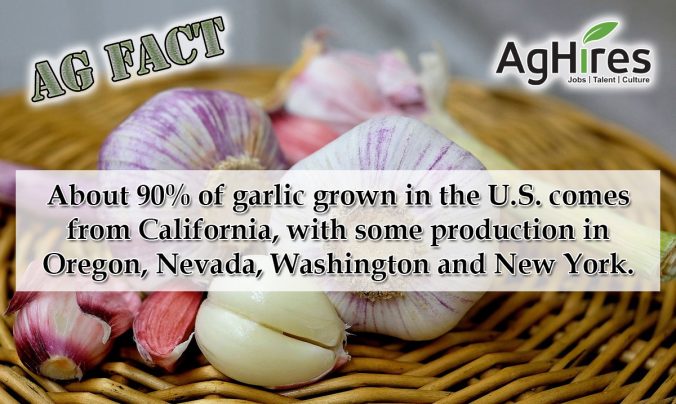
Since April 19th is National Garlic Day, we decided to put together some facts about the herb.
- Garlic originates from central Asia.
- It was one of the first herbs to be cultivated.
- The herb has been used for both medicinal and culinary purposes.
- Garlic is part of the Lily family, which also includes onions, leeks and shallots.
- There are over 300 varieties grown throughout the world, which can be put into two groups hardneck (or topset) or softneck (or artichoke).
- Hardneck varieties produce elongated flower stalks and bulbils, while softneck varieties does not produce bulbils, unless under stress.
- Hardneck varieties may be purple, purple striped, or white.
- About 24,000 to 26,000 acres are planted each year in the U.S., producing about 400 million pounds of garlic.
- About 90% of garlic grown in the United States comes from California, with some production in Oregon, Nevada, Washington, and New York.
- About half of the garlic produced in the U.S. is for the fresh market while the remaining half is dehydrated.
- China produces majority of the world’s garlic, about 66%.
- The average American consumes about 2 pounds of the herb each year.
- Garlic is planted early enough in the fall so that a good root system can develop before the ground freezes and late enough to prevent shoot emergence above the soil.
- The crop can grow up to about 4 feet.
- The crop produces an oval bulb that contains about 7 to 15 cloves.
- It is ready to be harvested when 40% to 60% of the leave have turned yellow. Most varieties are ready by mid-July.
- The bulb color depends on the variety. Most common types have white or pinkish bulbs.
- The root is located on the basal part of the bulb.
- Garlic will produce greenish, white or pink flowers developed at the end of long flower stalks.
- The crop produces flowers that contain both types of reproductive organs, called hermaphrodite flowers. Bees and other insects are responsible for pollination.
- The herb must be stored unpeeled in dark, cool, dry place, away from other foods.
Want more Agriculture Facts? Click here
Follow us on Facebook and Twitter to get your weekly dose of Ag Facts.
Check out these sharp facts about garlic!






